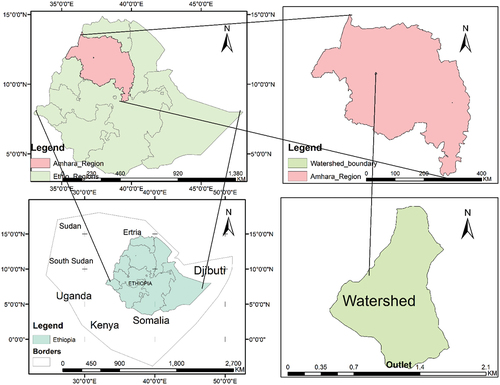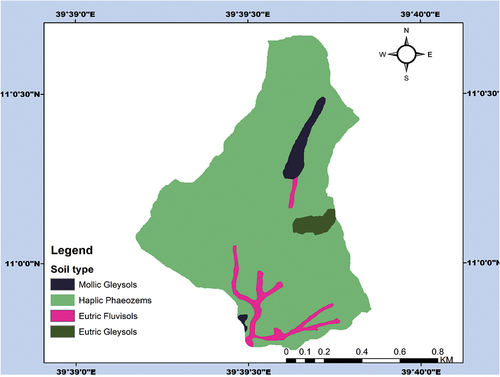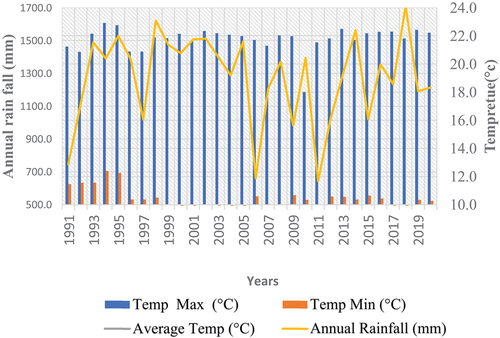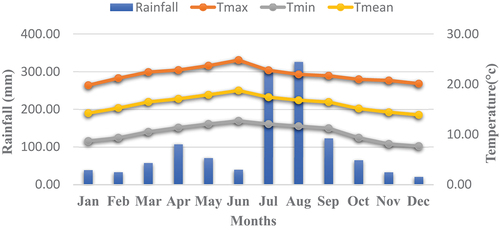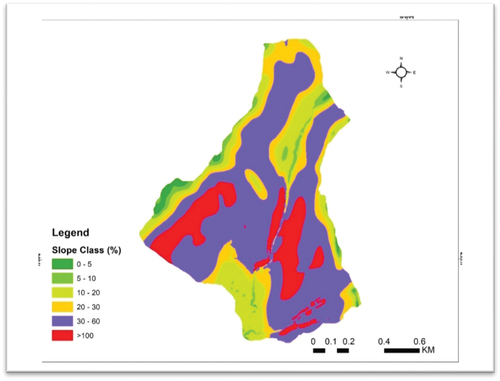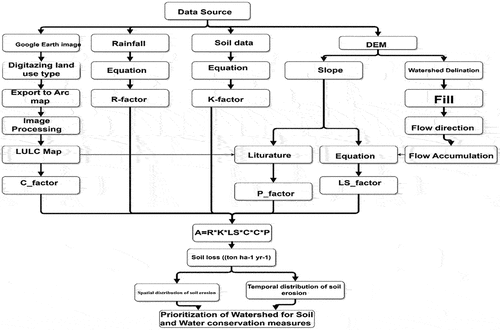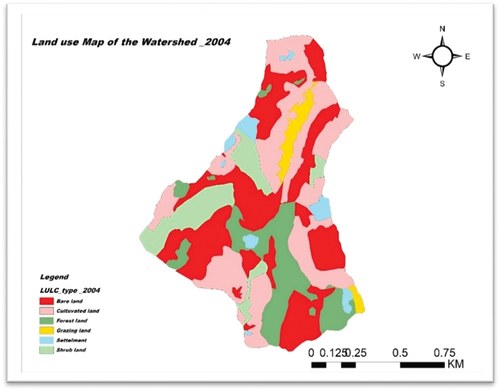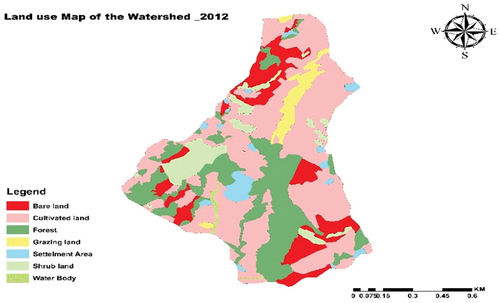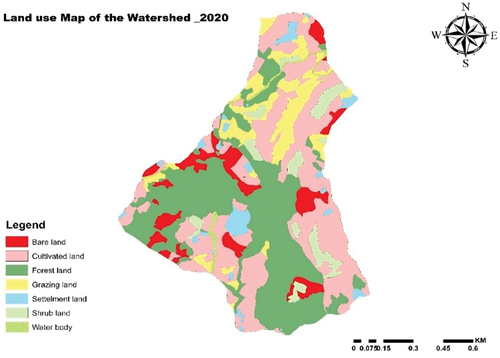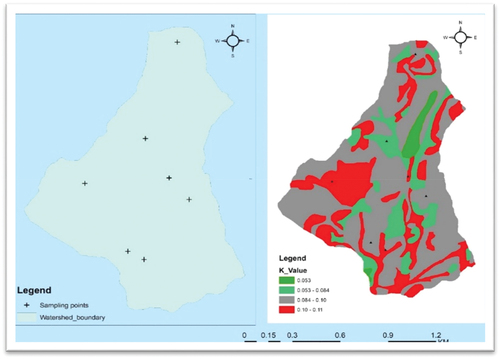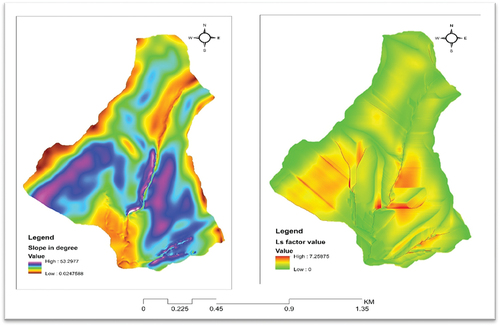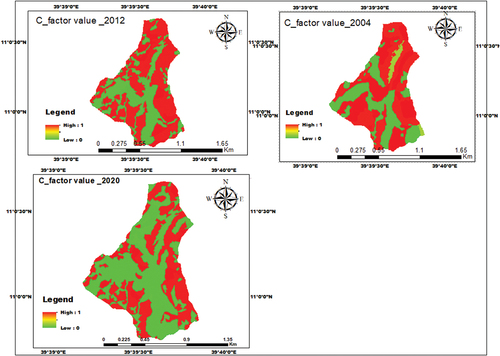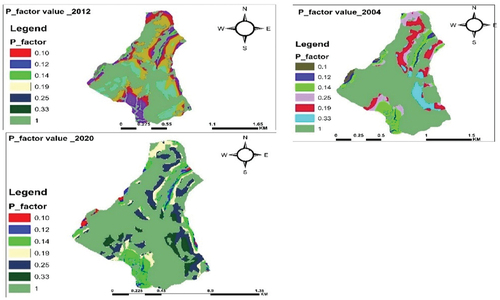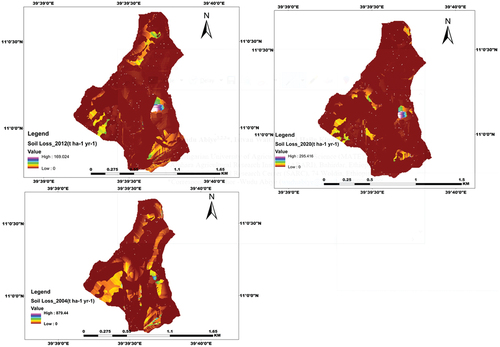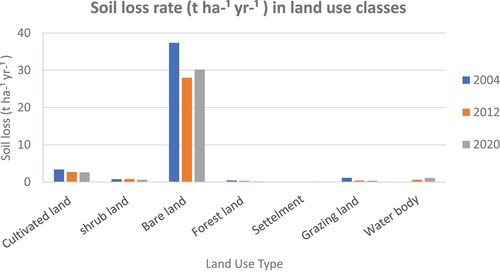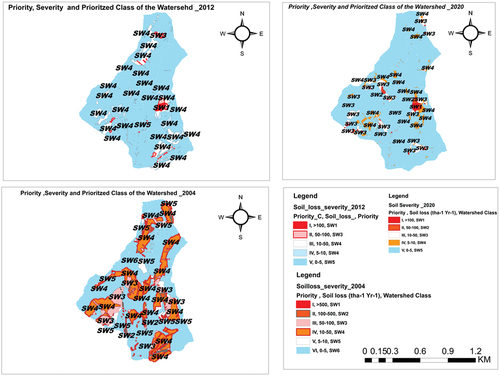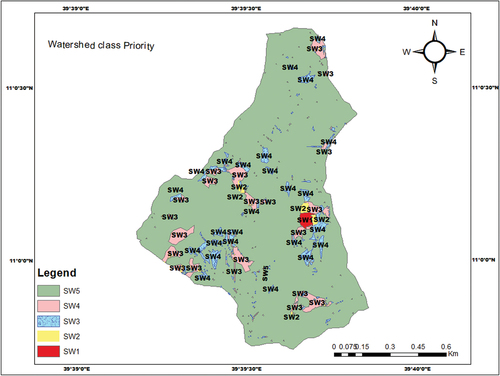Figures & data
Table 1. Data used and source.
Table 2. Land use Description of the study area (Tesfaye et al. Citation2017).
Table 3. C-factor value based on Hurni (Citation1985) and Nigussie et al. (Citation2017).
Table 4. Land use type in Maybar watershed for 2004, 2012, and 2020.
Table 5. Trend of LULC 2004 – 2020.
Table 6. Mean annual rainfall and erosivity factor of the study area.
Table 7. Statistically summary of soil parameters in the watershed.
Table 8. Soil type and corresponding erodibility factor of the watershed.
Table 9. Estimated soil loss with slope gradient in 2004 and 2020.
Table 10. Support practices (P) factor based on (Wischmeier and Smith Citation1978a).
Table 11. Temporal variation of soil erosion with land use dynamics.
Table 12. Distribution of annual and mean soil loss between different types of land use during (2004, 2012, and 2020).
Table 13. Soil erosion across different soil types during 2004, 2012, and 2020.
Table 14. Soil erosion classification based on Morgan (Citation2005a).
Table 15. Prioritized part of watersheds for conservation planning purposes.

